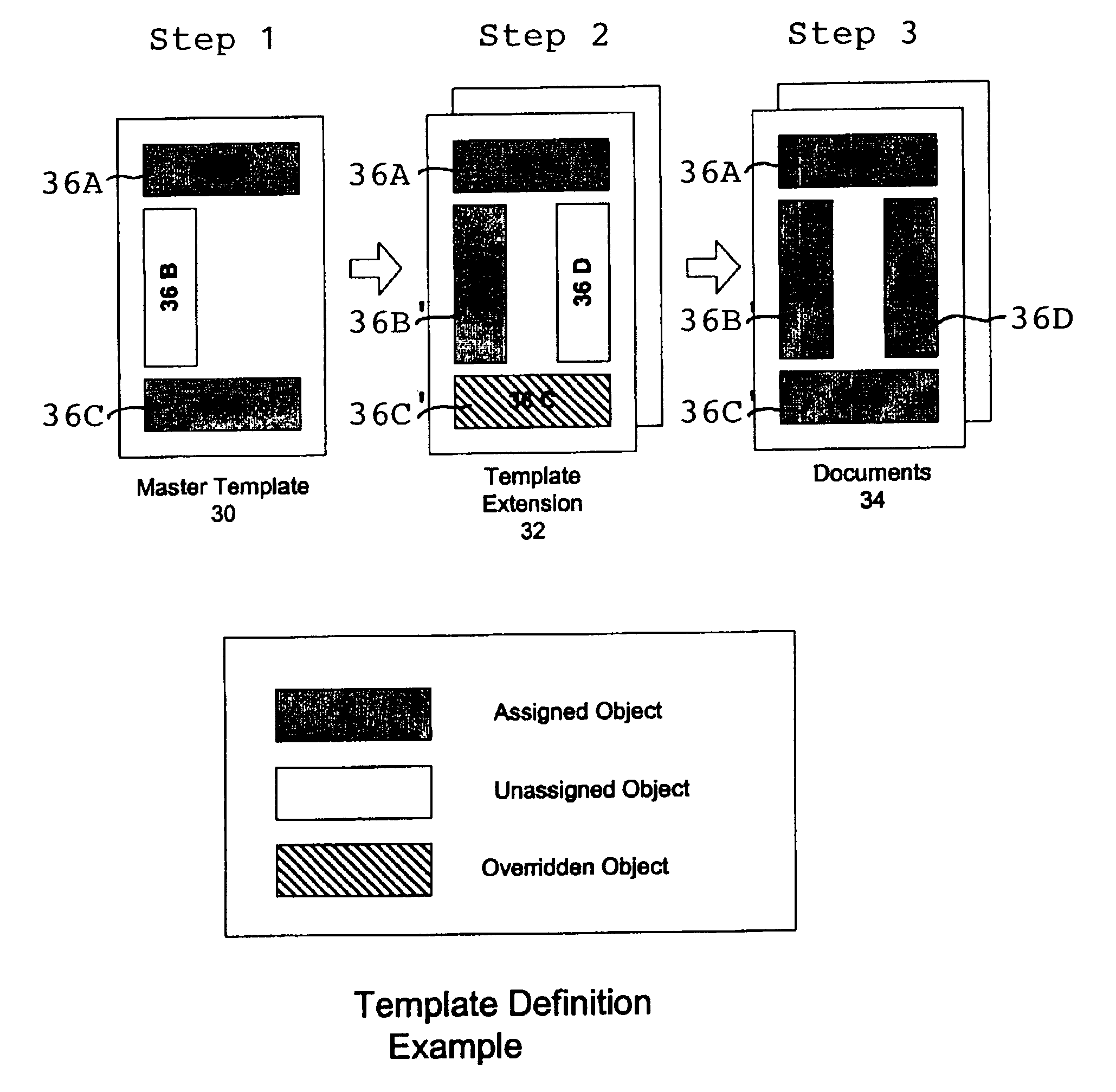Web site application development method using object model for managing web-based content
a web site application and object model technology, applied in software design, instruments, digital computers, etc., can solve the problems of laborious and slow process, large volume of distributed data and content management, etc., and achieve the effect of simple management, high structure, and easy customization of the look and feel of the web site application
- Summary
- Abstract
- Description
- Claims
- Application Information
AI Technical Summary
Benefits of technology
Problems solved by technology
Method used
Image
Examples
Embodiment Construction
[0037] The following describes a preferred embodiment of the invention method and system for creating Web applications. The preferred system is developed in the JAVA programming environment. The Web application is designed to serve up webpages with diverse content in response to requests from clients in a client / server network such as the Internet. However, it is to be understood that the principles of the invention disclosed herein may be applied similarly to other applications development environments that are used to develop applications that require complex content management to generate documents that are served to clients in any client / server network. For example, the invention may be similarly used for Web applications developed in the .NET development environment offered by Microsoft Corp., Redmond, Wash., for e-commerce enterprise applications developed in the WEBSPHERE development environment offered by IBM Corp., Armonk, N.Y., for mobile data applications developed in the...
PUM
 Login to View More
Login to View More Abstract
Description
Claims
Application Information
 Login to View More
Login to View More - R&D
- Intellectual Property
- Life Sciences
- Materials
- Tech Scout
- Unparalleled Data Quality
- Higher Quality Content
- 60% Fewer Hallucinations
Browse by: Latest US Patents, China's latest patents, Technical Efficacy Thesaurus, Application Domain, Technology Topic, Popular Technical Reports.
© 2025 PatSnap. All rights reserved.Legal|Privacy policy|Modern Slavery Act Transparency Statement|Sitemap|About US| Contact US: help@patsnap.com



